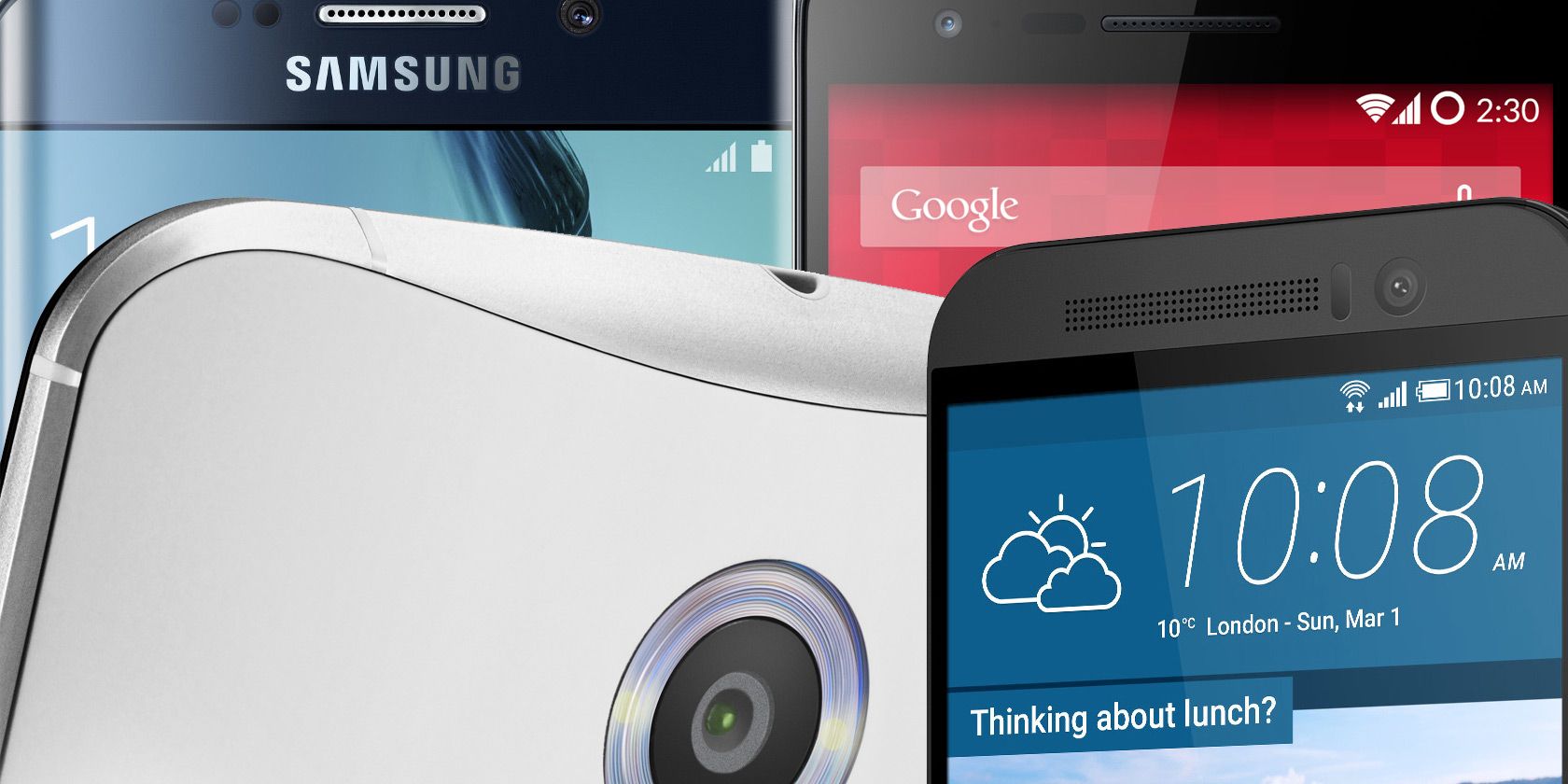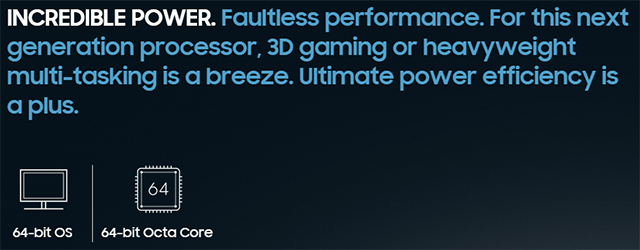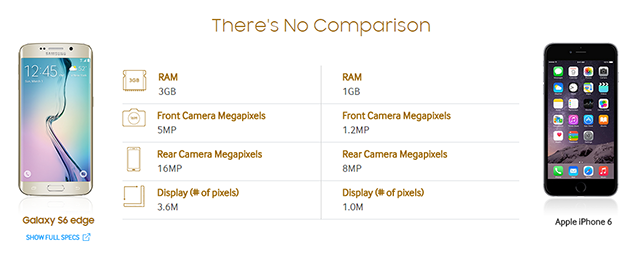You're almost done with your two-year contract and you're starting to pay attention to all the smartphone advertisements you see, hoping that something will pique your interest. You hear something about an octa core, 20-megapixel, Quad HD smartphone with 3GB of RAM. You have no idea what that means, but it sure sounds fast and powerful in the commercial.
Advertisers and hardware manufacturers love to do this, especially within the realm of Android. They pack their phone full of "high-end specs" that have limited real world application, and they make their phones sound fancy and desireable.
But you don't want to be fooled by some advertiser. Here are some of the most common ways phone manufacturers try to trick you, and exactly what the terms really mean.
Dual, Quad, or Octa-core?
You've probably heard a few of these terms thrown around. On their Galaxy S6 homepage, Samsung says their smartphone has a 64-bit octa core processor -- which sounds great! -- but what does that really mean?
We've explained recently why an octa core processor isn't necessarily better than a quad core, but here's what you need to know in short.
For quad core or octa core processors to really improve your phone's performance, the software needs to be optimized to handle all those cores. Most apps today barely take full advantage of dual core systems, much less quad or octa core. Gaming is likely the realm where this is most useful, but even that is helped more by the (often under-discussed) GPU.
On top of that, a more modern and powerful processor architecture goes a long way -- regardless of its cores. A newer, more powerful dual core chip will easily blow an older or less powerful octa core chip out of the water.
Understanding mobile processor jargon is complicated, but all you should be worrying about is real-world performance. Walk into a store, play around with a phone and see how it handles. You might be surprised to see that the dual core iPhone 6 handles just as well (if not better) than the octa core Samsung Galaxy S6.
More Megapixels, Better Pictures?
More megapixels should mean better photos, right? Well, not always. We've previously broken down what a megapixel is and how it operates, but here's what you need to know.
Advertisers are always going to be bragging about their megapixels -- like HTC in the above commercial for their UltraPixel front-facing camera and 20-megapixel rear-facing camera on the One M9. While we found these to be very capable cameras in our review of the One M9, the marketing behind them would suggest that they leave other smartphone cameras in the dust.
That's just not the case. The Galaxy S6's 16-megapixel rear-facing camera is comparable, and even the iPhone 6's 8-megapixel camera is a strong competitor. You do need a certain amount of megapixels to get a decent picture, but once you're past that point, the focus should be more on aperture, shutter speed, sensor size, and other aspects of the camera. Just because one camera has more megapixels doesn't mean it's better.
1080p, 2K, or 4K Screens?
There's been a lot of debate recently around 2K Quad HD screens and 4K Ultra HD screens on smartphones. When smartphones made the jump from standard resolution to 720p, you could see a difference. When they jumped from 720p to 1080p, the difference was less noticeable, but still present.
But now that we've reached 1080p screens on (generally) 5-inch devices, the pixel density of most smartphones has gotten so high that we can't ever see individual pixels. Apple started calling their screens "Retina Display" after they reached over 300 pixels per inch (ppi), but most smartphones now have over 400 or 500 ppi.
In the Galaxy S6 video above, Samsung brags about the Quad HD display, also known as 2K. It has a resolution of 2560 x 1440 pixels, giving it a ridiculous pixel density of 577 ppi. That's great, and you certainly won't see any pixels, but you probably also wouldn't see a difference if Samsung had gone with a 1080p panel, which would've given it a 432 ppi -- still well beyond the "Retina Display" level.
These extra pixels have one real-world application, though: battery drain. Your phone has to power all those pixels. So even though you're not getting a noticeable bump up in display quality, the screen is going to be sucking more juice from your device when in use.
Does RAM Matter?
Yes, RAM definitely does matter -- but its importance might be overblown in some comparisons. For example, the screenshot below is from Samsung's American Galaxy S6 page.
We've already talked about how their comparison of megapixels and display pixels is pointless, but look at how much more RAM the Galaxy S6 has! It must be much more powerful and better at multitasking!
Hold up, I know it sounds great, but this comparison chart doesn't take into account these two phones' respective operating systems. Android undoubtedly needs more RAM. Having only 1GB of RAM on a modern Android device might hamper your experience a bit as applications are constantly reloading, and some games might struggle to play. (Though, if you have a lot of RAM and use a task killer or constantly clear your RAM, you'll run into the same issues.)
iOS, on the other hand, requires a lot less RAM to function. If you've ever used an iPhone 6, you'll know that it multitasks just fine and can easily handle gaming. The difference is in the operating system. In real-world usage, you probably wouldn't be able to tell which device has more RAM.
Note: before you start calling me an Apple fanboy, you should know that I'm very much so an Android fanboy -- I love my OnePlus One and all its wonderful features -- I'm just capable of acknowledging the differences between the two operating systems.
You Can Talk To Your Phone?
Sometimes, you're going to see a commercial with a really cool feature. You can ask your phone a question and it will respond? How revolutionary! Well, in reality, sometimes these commercials highlight features available on a wide range of devices.
Take the above Nexus 5 ad for instance. I love the Nexus 5, and I love the features it's trying to show off, but none of them are unique to the Nexus 5. Saying "OK Google" to start a search is available on any Android device. The Google Camera app is available on Google Play, and in fact, it's many Android users' camera app of choice (it even has some hidden features).
Likewise, the Google Photos app is also on the Play Store, and many non-Nexus phones ship with it preinstalled -- Google even just announced that it will have unlimited photo storage for pictures up to 16MP.
It's a cute ad, but you could really replace the Nexus 5 with any other Android phone and use the exact same apps. If you ever see an ad for a phone with a particular feature, it's worth asking, can other phones do this too?
How Do You Avoid the Marketing Hype?
It's an advertiser's job to make any smartphone seem like the best thing on the planet, even though the best phone for you could be different from the best phone for me. Because of that, it's definitely worth ignoring the advertisement jargon and doing your own research.
Maybe you want the large screen and simple interface of the iPhone 6 Plus (our review), or maybe you'd prefer the week-long battery life of the BLU Studio Energy (our review). To each is their own.
But we'd like to hear from you. How do you sift through the advertisements to find the phone that's right for you? What features really matter for you? Let us know in the comments!



